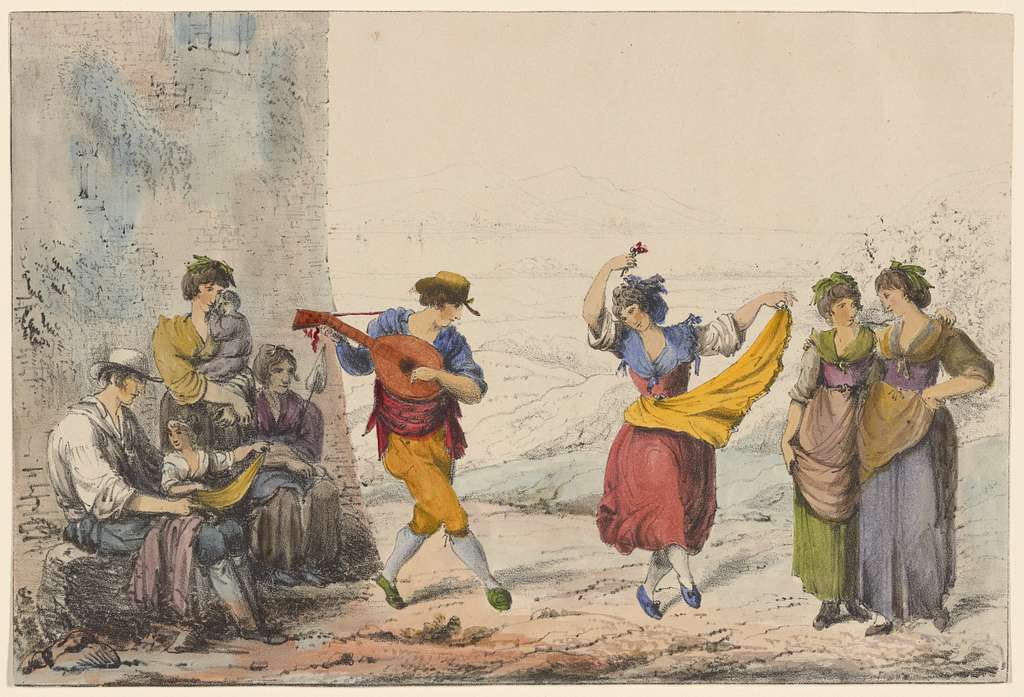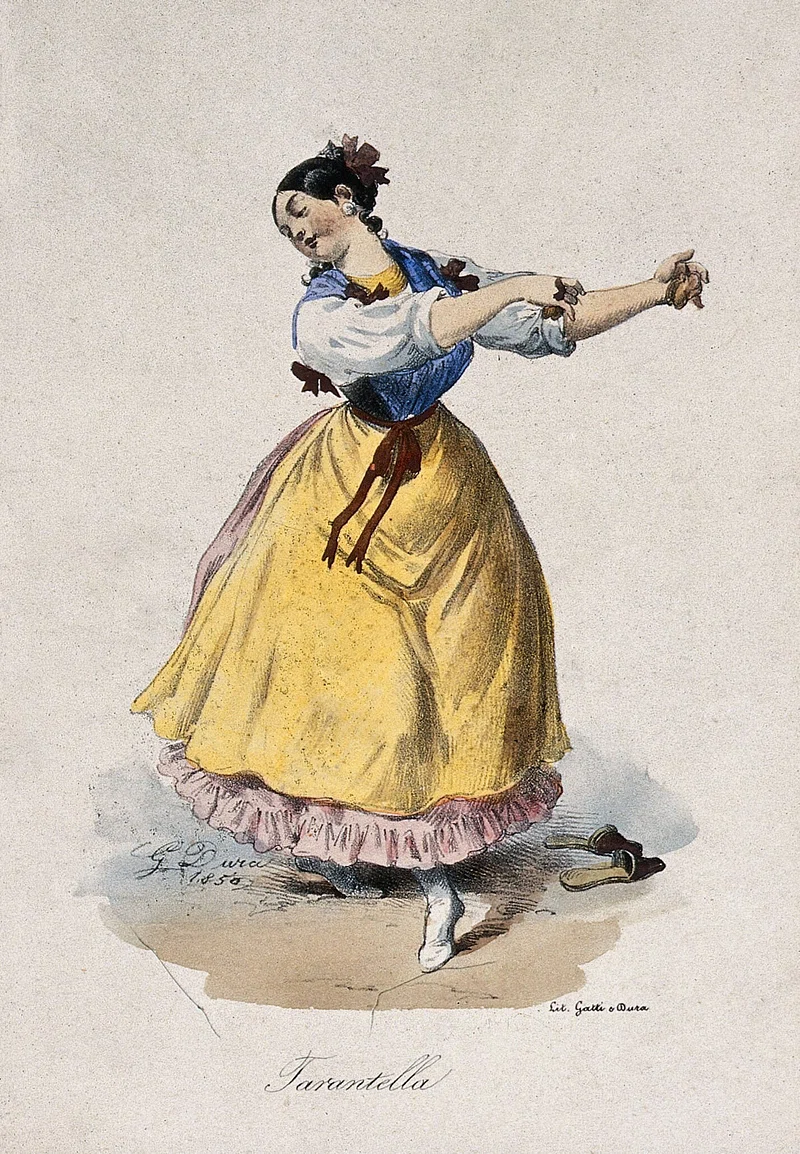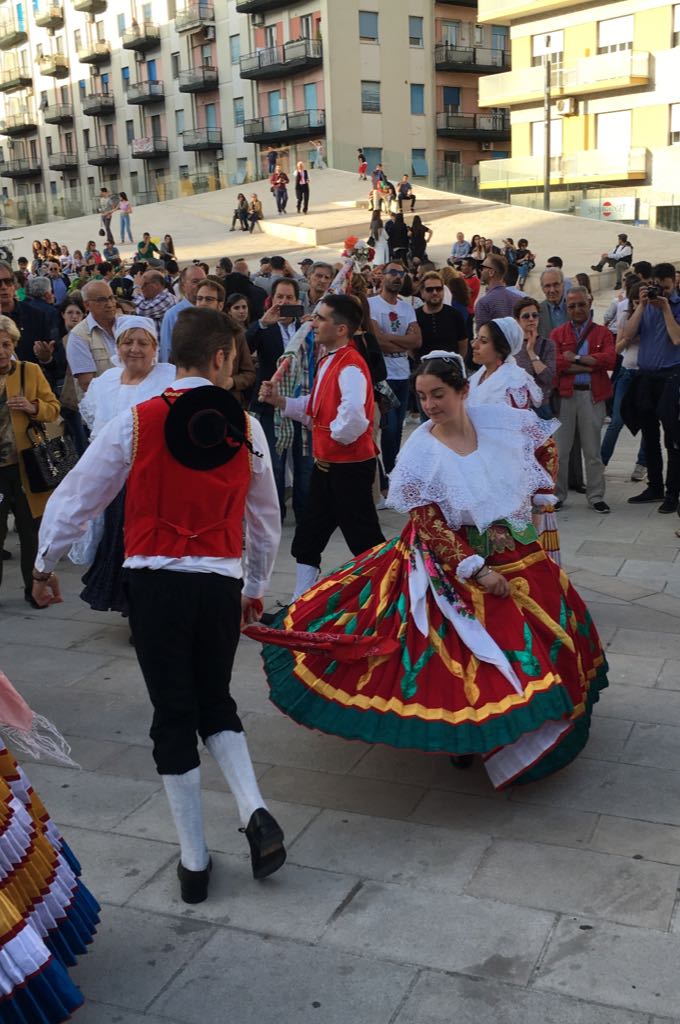ὕβρις. It’s one of the most recurrent terms of Greek literature, especially the texts of the tragedies. Literally translated as pride, haughtiness, or insolence, ὕβρις is most often associated with those who dare defy the gods, committing the sin of ὕβρις against them. The young commoner Arachne, as Ovid recounts in the Metamorphoses, thought herself better than the deities, especially in the art of weaving wool. Athena, angered by Arachne’s vanity, challenged her to a weaving contest. Athena’s tapestry depicted scenes of the gods in their glory, while Arachne’s portrayed the misdeeds and indiscretions of the gods, particularly those of Zeus, and Athena, in a fit of rage, destroyed the talented weaver’s tapestry and loom. Arachne attempted to hang herself, but Athena took “pity” and transformed her into a spider, condemning her to weave forever.
It is from her, poor Arachne, that the idea of tarantism comes. Puglia’s predecessors believed that when the local tarantula, known as Latrodectus tredecimguttatus or the Lycosa tarantulaspinge, bit its victims–infecting them with tarantism–the only cure was a precise ritual of music and dance.
It’s a phenomenon that first finds its roots in the area of Salento as early as the 11th century, but that didn’t take off in earnest until the 15th century or so, when women worked in the fields during summer. Salentine women played a crucial role in agricultural activity as pickers, especially in the olive groves and tobacco fields, and they would oft be bitten by spiders while on the job.
The initial symptoms of the thought-to-be-lethal illness included lethargy, indifference, and malaise. As a woman started to drift towards a catatonic condition, the only remedy that could prevent them from falling victim to the toxin was music.
To try to heal the women, tarantulas were gathered on June 28th, and to the rhythm of tambourine and accordion, with red, green, or blue handkerchiefs (which recalled the shades of the spider’s abdomen), the victims would wiggle in spasmodic dances without restraint, rolling on the ground upon laid-out sheets; the tempo would rise, the music reaching a crescendo, and the women would leap up and convulsively fling their limbs about themselves. All the neighbors would flock to watch, hypnotized by an erotic and sensual dance unlike any other.
The goal was to symbolically and physically subdue the spider, crushing it to free themselves. To do so, all morally-imposed behavior could be abandoned, and it often happened that the women simulated sexual intercourse. The ritual, which could last up to 24 hours, was over once one could get the better of the insect, stomping it on the ground and killing it.

The whole thing was an exorcism of sorts, and it all happened under the benevolent gaze of the votive images of Saints Peter and Paul. It was a mingling of the sacred and the profane. The dance, however, did not necessarily work; some women never healed, or some who did were systematically bitten every year.
What those Puglian townspeople didn’t know–and we now do–is that the bite of the Lycosa tarantula has just as much venom as a bee sting. It’s quite possible that the symptoms were not those of a spider bite, but of the inhumane living conditions, and the repression of a patriarchal society, that poor peasant women were forced to live through. In dance, they found strength to be reborn, freedom to overcome the limits imposed by others, and an outlet for their sexual inclinations. Beating their chests and writhing became the perfect expressive tool for letting go; spontaneous motion without qualms, guided by rhythm and a force that seemed to come from the bowels of the earth.
The music and dance–tarantism’s prescription–was eventually codified into what we know as the tarantella today. Dancers make quick and agile steps, often involving rapid heel-to-toe movements, quick turns, and jumps, and the footwork is highly rhythmic and syncopated, following the fast-paced 6/8 time signature of the music. The tarantella also gave rise to the similar pizzica, usually performed in pairs.

The Notte delle Taranta is one festival that, since 1998, has continued the tradition. In August, thousands of people from all over the country reach Salento by any available means of transportation to dance and listen to the sounds of the pizzica and tarantella. The festival culminates in a grand concert in Melpignano, Lecce, featuring renowned Italian and international artists. Dominating the stage is the emblematic spider: Arachne.
One can also find the pizzica at the Feast of San Rocco in Torrepaduli, a hamlet in the province of Lecce, where every year on the night of August 15th, men engage in pizzica-scherma: two challengers are guided by the sound of tambourines and simulate a duel with their hands as if they had weapons. The musicians arrange themselves in a circle around them and increase the rhythm of the music as the dance unfolds. If one of them is touched, they must take over and continue the duel. Each movement corresponds to a precise code, nothing is dictated by chance, and few are those who know the secrets of this ritual. This very particular type of pizzica originated in underworld circles, as it was first used as a kind of initiation rite in prison. (Other festivals to check out include BALLATI! Festa della Tradinnovazione, which aims to experiment with new types of sound, and the TamTam Tamburreddhu Festival, in and around Lecce, which focuses on the tambourine.)
Salento seems like it will never stop dancing, so, if you’ve got the boogie fever, you certainly now know where to go.

